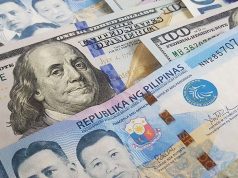ASEAN @ 50: Resilient but weak?
The Association of Southeast Asian Nations (ASEAN) held its 31st ASEAN Summit and Related Summits in the Philippines last 12-14 November 2017. What marked these summits different from the past was that this year was also ASEAN’s 50th founding anniversary.
Dubbed as “ASEAN at 50,” ASEAN remains to be the longest-running regional organization of small and medium-sized countries in a region dominated by big power rivalries. It has survived various challenges to its organization and mandate despite the lack of unity and/ or consensus of its member states on key issues that confront the organization. Nonetheless, while the ASEAN proves to be resilient, can we also say it is relatively strong?
Fifty years, thereafter, it becomes imperative to ask what has become of the ASEAN. What were its key accomplishments? What remain as obstacles to becoming a strategic and important actor in both regional and global politico-economic landscape? What are the prospects for the ASEAN?
ASEAN AT 50: KEY ACCOMPLISHMENTS
Truly, the ASEAN has grown significantly both in numbers and significance.
From the original five founding member states in 1967, namely, Indonesia, Malaysia, Philippines, Singapore, Thailand, the ASEAN has become a ten-member regional organization of developing countries that include Brunei Darussalam (1984), Vietnam (1995), Laos and Myanmar (1997), and Cambodia (1999).
Thirty years after its founding, ASEAN Vision 2020 was forged by the ten member countries. The Vision seeks to build ASEAN as a concert of Southeast nations — an ASEAN community comprising an economic community, a political and security community, and a socio-cultural community by 2020. Such goal is notably different from and more advanced than the association’s founding goals which aimed at being an instrument for mobilizing regional resources to deal with intra-regional conflicts and some underlying security tensions within the region.
By default, the ASEAN has also played an important role in the regional architecture by creating ASEAN-led regional frameworks in the midst of big-power rivalries in the region. These include the ASEAN Regional Forum (ARF) in 1994, the ASEAN Plus Three (APT) in 1997, and the East Asia Summit (EAS) in 2005.
In recent years, the world’s major powers are stepping up their political and economic engagement with the ASEAN.
First, ASEAN economies have grown since the 2008 global financial crisis when even advanced countries struggled to do so.
Second, the ASEAN’s efforts toward a wider ASEAN Economic Community (AEC) has created a market of approximately 600 million people characterized by young demographic and increasing purchasing power. And third, production and trade networks are increasingly shifting towards the Asia Pacific, where the ASEAN plays a strategic role.
REMAINING OBSTACLES
While so much has been achieved, much more still needs to be done. Two key issues that have great implications for ASEAN unity and centrality are the infrastructure gaps in the region and the South China Sea disputes.
Leaders and sympathizers of the ASEAN agree that significant investment in infrastructure is needed for the region to achieve its full potential. Infrastructure investment covers transport, power, telecommunications, water supply, and sanitation. To maintain economic growth and achieve its full potential, the ASEAN would need over $2 trillion in investment in road, rail, port, airport, power, water, and telecommunications infrastructure across ASEAN according to The McKinsey Global Institute.
At the ASEAN Business and Investment Summit (ABIS) 2017 held in the Philippines on 13 November 2017, Russian Federation’s Prime Minister Dmitry Medvedev informed the delegates that his country would seriously explore how to deepen ties with the region as he acknowledged that trade between his country and the ASEAN is limited. He even pledged to provide infrastructure capability for airports, railroads, highways, and high speed communication channels in order to improve regional connectivity.
South Korean President Moon Jae-In, on the other hand, emphasized that there are “infinite areas of cooperation” with ASEAN but zeroed in transportation, energy, water resource management, and smart information and communication technology as the four main areas of cooperation.
He expressed support for ASEAN leaders in their efforts to resolve overcrowding of big cities and accelerate regional integration, and hence, to share his country’s knowledge to the ASEAN.
Asian Development Bank (ADB) Vice-President Diwakar Gupta estimated that the ASEAN needs about $60 billion in annual investments in infrastructure to catch up and ensure sustained rapid economic growth. He stressed that “regulatory and institutional reforms are needed to make infrastructure more attractive to private investors and generate a pipeline of bankable projects for public-private partnerships (PPPs).” He added that “deeper capital market reforms” are also needed to help channel the region’s substantial savings into productive infrastructure investment.
Similarly, Ayala Corp. Chairman Jaime Augusto Zobel de Ayala supports PPPs as they are the key to building an ecosystem that could prompt governments to invest in and for longer-term infrastructure projects and the private sector to provide the capital and innovation.
The South China Sea (SCS) maritime disputes remain to be the greatest challenge in the region and can be the litmus test for ASEAN’s unity and centrality in the region and the world. The South China Sea disputes have prompted some member states of the ASEAN to recalibrate their alliances and security relations with the USA and bolster their economic ties with China.
In 2012, China has been able to use its political and economic leverage over Cambodia, who was then Chair of ASEAN, to prevent the ASEAN from taking a unified position on the SCS disputes or initiating multilateral discussions and actions in addressing the issue.
For the first time in its history, ASEAN failed to issue a joint communique at the conclusion of its 45th Foreign Ministers (FM) Meeting in July 2012.
Hwe (2013:5), reflecting on ASEAN’s external relations, noted that the cost of ASEAN’s failure to its credibility was so great to compel Indonesian FM “to go on a shuttle diplomacy to launch an immediate damage control measure by getting all its ASEAN counterparts to agree on a six-point proposal on the South China Sea and get the Cambodian FM acting in his capacity as Chair to release this brief statement on 20th July, a few days after the FMs meeting”.
In November 2012, Cambodia angered several ASEAN members particularly those in dispute with China over the SCS when it tried to publish a declaration that implies a consensus among ASEAN leaders not to internationalize the territorial and maritime disputes in the SCS.
ASEAN statements issued in 2016 showed member states’ preference for the rule of law and peaceful conduct in the resolution of differences over the issue of the South China Sea disputes.
This year, with the Philippines as chair of the ASEAN, the ASEAN statements on the South China Sea disputes have opted for the need to draw up a Code of Conduct for the disputed waters and which will start in early 2018.
But with China’s Belt and Road Initiative and its influence on the ASEAN via its member states proxies, some cast doubt about how such Code of Conduct will progress.
The South China Sea disputes heighten major power rivalry in the region. The US, on one hand, remains the dominant power in the region. Nonetheless, some have surmised that its influence over the region has overstretched and its supremacy has eroded. China, on the other hand, has become an emerging power challenging US dominance over the region and shaking and tilting regional balance of power to its favor.
So what are the prospects for the ASEAN?
While the challenges are clear and present, the roadmap towards a united and strong regional organization is not. The huge infrastructure gap and the South China Sea disputes are both multidimensional, multi-level, multi-actor problems that would require, at the least, strong political will and genuine political and economic reforms from ASEAN member states.
It is high time for the ASEAN to “walk the talk” of its common perception of the critical importance of greater regional cohesion and complementation and move towards transforming the ASEAN into a stable, prosperous, and highly competitive region with equitable economic development and reduced poverty and socio-economic disparities.
If the ASEAN succeeds, then maybe, just maybe, by 2025, we will witness a new ASEAN, an ASEAN that is not only resilient and strong but an ASEAN that is truly connected.
Diana J. Mendoza, PhD is the Chair of the Department of Political Science, Ateneo de Manila University. She was a delegate to the ASEAN Business and Investment Summit 2017 held at Solaire Casino and Hotel, Entertainment City, Manila, Philippines on Nov. 13-14.



